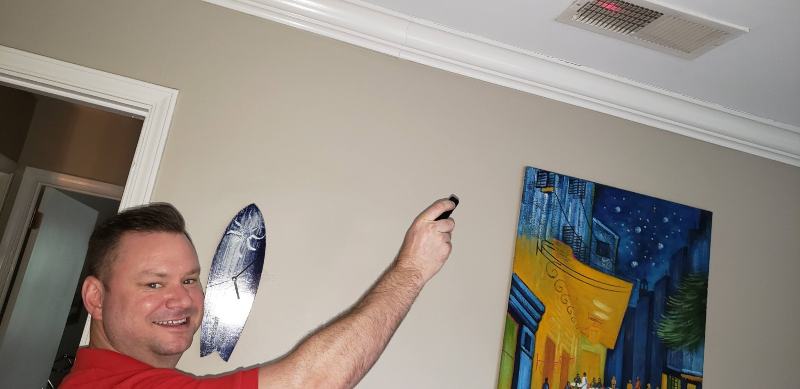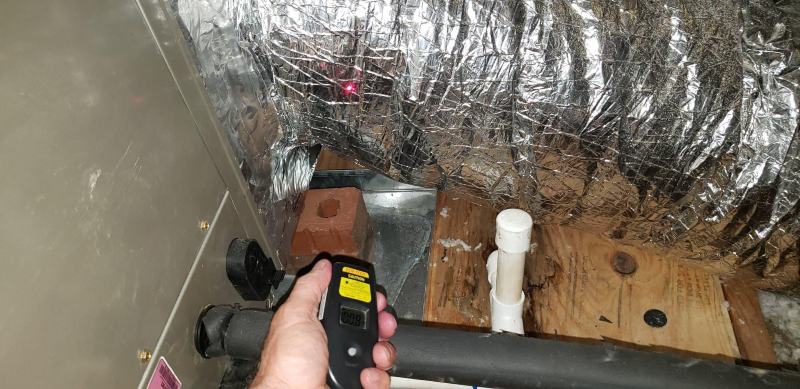Pop artist Tayna Tucker had a popular hit, “Delta Dawn”, that I often heard on the radio as a teenager. And I ALWAYS hear that melody in my head when I talk about Delta T!
NO, Delta T has nothing to do with Delta Dawn, Delta Force, or Delta Airlines!
When I’m in your house, looking for the cause behind your uncomfortable room(s) or zones – DELTA T is one of the important pieces of information I use to determine what is necessary to resolve your comfort issues.
The word DELTA simply means “change”. T stands for “temperature”.
Put the two together, DELTA T means: “Change in Temperature”
I’m measuring the change in temperature of the airflow in your HVAC system. We measure the temperature of the airflow coming from your SUPPLY vents, and the temperature of the airflow being drawn into your RETURN vents.
In hot, humid summer conditions, the HVAC industry professionals (of which I am not) tell me that the spread should be between 17 and 22 degrees between those two numbers.
“Bob, give me an example, before you lose me!” Glad you asked …
- When HVAC & Air-Duct systems are located in a vented attic, I almost always find Delta T numbers that are too close. For instance, the Supply Vent airflow temperature may be 65 degrees, and the Return Vent airflow temperature may be 78 degrees. That’s a Delta T of 13 degrees.
- According to the HVAC experts I follow, Thirteen degrees is too small of a Delta T.
- What are our options?
- Get the RETURN Vent Air Flow temperature higher? HECK NO! Everyone who is trying to sleep in an upstairs bedroom in July, knows they don’t want to get the room warmer.
- The obvious answer is… Get the SUPPLY Vent Air Flow temperature lower! In July, we all like colder air from our SUPPLY vents, yes?
- So you spend the $159 service call fee, and the HVAC tech comes out, and tests your system for proper refrigerant charge. “Ms Homeowner, your system is properly charged. It’s doing all it can do. Its several years old (10 yrs) and the new technology is really good. Can I set you an appointment for our Comfort Pro to come by and tell you all about the benefits of these newer systems?”
HUNDREDS & HUNDREDS of Atlanta homeowners hear those words, EVERY DAY during the summer. If you say “yes”, get ready to spend $7000+.

Bigger is Better, right? And, More is Better, right?
Mr Comfort Pro may talk to you like this, “You’ve got a 2 ton system in your attic that serves your upstairs living space. Because you tell me that it’s not comfortable upstairs, I’m going to install a 2.5 ton system.”
Is There Another Way? We need 4 degrees!
Consider another option…. What we need to do is simply get the system performing at the proper Delta T, and evaluate your insulation.
- We know we don’t want to raise the temperature in the house… thereby raising the RETURN airflow temperatures.
- Instead, we want to LOWER the SUPPLY airflow temperatures, about 4 degrees at minimum… to reach the proper Delta T.
Another Path to Comfort
- Service the existing machine, with a thorough cleaning. On a 10 year-old system, the coils will need to be cleaned of hair & dirt, etc. (Your AC coils look like your car’s radiator… you can imagine it clogged up, restricting airflow and limiting the effectiveness of drying and removing heat from your airflow.
- Evaluate the ducts. Are they leaking airflow? Seal the ducts. (U.S. Dept of Energy statistics: The average home in America has ducts leaking 30% of the airflow!) STOP Cooling Your Attic!
- Evaluate your ducts. Are they balanced? For most efficient operation, the amount of RETURN airflow should be about even with SUPPLY airflow. At Bird Family Insulation, we’re installing RETURN vents for our clients almost on a weekly basis.
- These measures alone, have helped hundreds of our clients get more comfortable in their homes, by dropping the SUPPLY temperature, and the Delta T getting more in-line with industry standards.
- Improve your home’s air-tightness and insulation … by air sealing and adding cellulose insulation; OR by adding spray foam insulation!

BOOM BABY!
Now you’re comfortable, using your current HVAC system, and your home has increased resale value, and your heating and cooling bills are lower! AND… when you do need to replace the upstairs system, it can be a smaller (2-ton) system, due to your improvements in duct design, air-tightness, and insulation!






